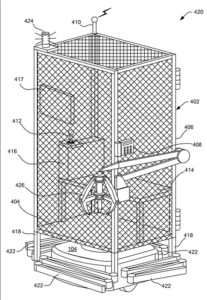We are all familiar with the science fiction vision of cyborgs. From Luke Skywalker to the Terminator we have an idea in our heads that a cyborg is a futuristic combination of human and computer. Science fiction cyborgs are typically depicted as anthropomorphized machines that look and act, for the most part, like humans. That future is probably closer than you might think. Indeed, if you use a smart phone, you are technically a cyborg, combing your human body with the knowledge you input and output using your hand-held wireless computer.
Machines, such as robots, do a few things quickly and precisely. Humans do a very large number of things slowly and clumsily. Cyborgs can combine the efficiency of robots, with the problem-solving of humans. While there are relatively few problems a human can solve that a machine cannot be programmed to solve, many problems that companies need to solve occur so rarely, that it is inefficient to program a robot to accomplish them all. That is where the wide-ranging, albeit much less efficient, problem-solving of a human comes in handy. The cyborg is a symbiotic relationship. The cyborg can solve reoccurring problems and perform reoccurring tasks much faster than a human, and a human can solve more rare problems and perform more rare tasks than a robot.
As technology develops, we are seeing a full range of new cyborgs integrating humans with computers. Many of these task-specific cyborgs are readily distinguishable from mere humans. An example of such a task specific cyborg is detailed in Amazon’s United States Patent No. 9,280,157. Patent ‘157 describes a mobile metal cage that contains a human. The cage is  designed to allow a human to safely navigate a work area populated with autonomous cybernetic robots in a setting such as an Amazon warehouse. Since these robots may or may not be programmed to identify humans in their workspace, a human simply walking into a warehouse with robots whipping by at high speed can lead to injury or death for the human.
designed to allow a human to safely navigate a work area populated with autonomous cybernetic robots in a setting such as an Amazon warehouse. Since these robots may or may not be programmed to identify humans in their workspace, a human simply walking into a warehouse with robots whipping by at high speed can lead to injury or death for the human.
The device described in the ‘157 patent has wheels under the cage and is controlled by the human operator inside the cage. The human can maneuver the mechanical/human cyborg to where it is needed to fix or retrieve items in the workspace. The computer monitors the other robots in the area to avoid collisions and protect the human. The system also has extensible barriers that allow the human to exit the cage while still protecting the human from nearby robots. While this particular cyborg is not in use, and is not planned to be placed into use anytime in the near future, it provides some insight into what future cyborgs might look like.
Industrial cyborgs, like Amazon’s moving human cage, combine the robot’s ability to move quickly and safely, with a human’s ability to solve unique problems. For most industrial applications, there is no need to make the cyborg look like a human. This allows designers to maximize the utility of future cyborgs to exploit the best aspects of the machine aspect of the cyborg, namely speed and precision, and the best aspects of the human, namely ready adaptation to a number of novel problems too numerous and rare to all be cybernetically programmed into the machine. So for the immediate future, it is likely that most of the industrial cyborgs being developed will look much more like Amazon’s mobile human cage than the Terminator.
While machines currently lag behind humans in the number of mundane tasks they can accomplish, the use of artificial intelligence, or computer learning, is quickly closing that gap. Within a generation, it is likely that artificial intelligence will allow machines to surpass humans in nearly every situation. Humans simply transmit information too slowly to compete. No matter how much computing power you hold in your hand, there is simply no interface that can allow you to access that power as quickly or efficiently as a computer can.
To allow humans to compete with artificial intelligence on a more even playing field, researchers are developing improved personal human machine interfaces that link your brain directly to your computer. One such system is the mesh-brain implant. Such an implant would be injected directly into your brain, to allow you to send and receive information directly to a computer. While the mesh-brain implant is still a ways off in terms of human testing, more practical, albeit less efficient, human/computer interfaces like Elon Musk’s Neuralink interface are likely to be announced as a viable product in the relatively near future.
While these personal cyborgs will look more like Terminators than industrial cyborgs like Amazon’s mobile human cage, they each have their place. Given the rapid development of human/machine interface, it is more likely than not that you will have a neural implant within your lifetime. As to whether these new interfaces will allow you to compete with the even more rapid development of artificial intelligence, that has yet to be seen.





Recent Comments